 |
Rodriguez could be selected in the Rule 5 Draft (Photo: Tony Lastoria) |
This year I am adding a new break down as each year we will also look at the highest level each player has reached. I will only count the highest level though if they make 8 starts or appear in 10 games. Also, there has been a lot of confusion over who is eligible and who the Indians might lose in the draft. For those who don’t know how it works and want to get more info on it, take a look at the FAQ housed on this site.
This article is a seven year look back at the Rule 5 drafts to help give an idea of who typically gets taken in the draft. I tried my best to locate every trade, but I admit I might have missed one or two as many of these players have little or no information on them thanks to the fact that few of them actually play any significant time in the majors. One thing to keep in mind is that when I talk of trades I mean trades where teams work out a deal to keep a player they selected and send him to the minors. I am not counting deals where Rule 5 selections are traded on draft day. In addition, I have listed a player as a starting pitcher (SP) if that was what he primarily did the season before in the minors, although if they get taken in the Rule 5 Draft most starters will be middle relievers in the big leagues.
2003
In the 2003 Rule 5 Draft there were a total of 20 selections, only 7 of which were kept (roughly 1/3). There was one trade which most Indians fans will remember: the Indians traded a selected player, Willy Taveras, along with Luke Scott for Jeriome Robertson. While a stinker of a deal now, I can’t fault the Indians for trading for a lefty coming off a 15 win season in a hitter’s park. The break down of players selected in the draft is as follows:
SP: 1 (5%)
MR: 12 (60%)
C: 0 (0%)
1B: 1 (5%)
2B: 0 (0%)
SS: 2 (10%)
3B: 0 (0%)
UTIL: 2 (10%)
OF: 2 (10%)
Indians selected: 4 (20%)
The four Indians selected in the draft were Willy Taveras, Hector Luna, Lino Urdaneta, and Matt White. Of these players only Luna was not offered back to the Tribe. The biggest names selected in the draft were either Taveras, Matt White, or Chris Shelton to Detroit. In other words, it’s not like any all stars were taken in 2003. White’s name is only well known because he is baseball’s first billionaire player, thanks to buying land and finding out it was worth over 2 billion and not because of his seven games of pro play. I have listed the category of a utility player here for the first time – this is a player who logs 50 or more games at multiple infield positions.
Now for the information on levels:
MLB: 2 (10%)
AAA: 6 (30%)
AA: 10 (50%)
A+: 2 (10%)
Teams seemed to take the biggest risks with utility players and middle relievers when they reached down to AA. Luna and Gonzales were both players who spent a full year in AA. The two players taken from High-A were Taveras and Bautista, both had logged a lot of time in High-A and came with solid pedigrees as Taveras was the Indians #4 prospect in 2001 and Bautista was the #7 prospect in 2003.
2004
In the 2004 Rule 5 Draft there were 12 players selected and of those only 3 were kept. There were no deals and the Indians did not have any selected that year. The break down for 2004 was:
SP: 3 (25%)
MR: 5 (42%)
C: 0 (0%)
1B: 0 (0%)
2B: 0 (0%)
SS: 0 (0%)
3B: 1 (8%)
UTIL: 0 (0%)
OF: 3 (25%)
Indians selected: 0 (0%)
Of the players kept, the player who hasn’t gotten much publicity is Andy Sisco, someone people made a big deal of when he was first drafted but who has really failed to do much since then. The best player selected in this draft was Shane Victorino, but he was actually not kept. Victorino could not make the Philly squad, but the Dodgers didn’t want to pay the money for the return fee so Philly was able to keep him. It’s undoubtedly a mistake the Dodgers regret to this day as the return fee is virtually nothing. Another name of note is Tyler Johnson who was a solid reliever for the Cardinals the year they won the World Series, but has since suffered an injury which derailed his career.
Now for the information on levels:
MLB: 1 (8%)
AA: 5 (42%)
A+: 4 (33%)
A-: 1 (8%)
R: 1 (8%)
Victorino was the one player with MLB experience. The players taken from the low levels where Andy Sisco who was a 6’10” lefty, Angel Garcia a 6’7” righty, and Marcus Carvajal who was a reliever. Sisco and Carvajal both stayed with their teams for the year working out of the pen.
2005
In the 2005 Rule 5 Draft there were again 12 selections and only 3 players kept. I also found no trades and there were zero Indians selected. The break down for 2005 was:
SP: 2 (17%)
MR: 8( 67%)
C: 0 (0%)
1B: 0 (0%)
2B: 1 (8%)
SS: 0 (0%)
3B: 0 (0%)
UTIL: (%)
OF: 1 (8%)
Indians selected: 0 (0%)
The big player that was selected during this year was Dan Uggla, who moved from Arizona to Florida. Another interesting aspect of this draft was pitcher Victor Santos, who was selected, stayed on the 25-man roster all year, and then was cut after the season was over. Now three years into this review we see that the draft is dominated by middle relief arms, specifically players who were relievers in the minors.
Now for the information on levels:
MLB: 2 (17%)
AAA: 6 (50%)
AA: 1 (8%)
A+: 3 (25%)
The big name from this draft Uggla was a player who had repeated AA. The rest of the players where more of a who’s who of the typical Rule 5 pick, that being a reliever who fails to do much.
2006
This year there was a rise in both players selected and those kept. There were 19 players taken and 4 kept, but the percentage of players kept dropped to 21%. There were also two trades that happened this year. The first player taken was an Indian, Ryan Goleski, but I am sure Oakland wishes they had taken Josh Hamilton instead. Here is the break down of the draft:
SP: 1 (5%)
MR: 10 (53%)
C: 3 (15%)
1B: 1 (5%)
2B: 0 (0%)
SS: 0 (0%)
3B: 0 (0%)
UTIL: 2 (11%)
OF: 2 (11%)
Indians selected: 2 (11%)
This is the most interesting draft in this five year cycle because not only were there two Indians taken, but two all-stars were also selected. The two Indians were Ryan Goleski and Jim Ed Warden, both of whom were returned to the Tribe. The all-star players taken were Josh Hamilton and Joakim Soria. Both players were surprise picks at the time but have looked like genius selections since. Hamilton had been out of the game for so long and Soria had never played above A-ball. They were both well-thought of though and ended up being the 2nd and 3rd players selected in the draft. This draft should also be noted for the solid relievers that it churned out with the likes of Jared Burton, Kevin Cameron, and Sean White which meant over a quarter of this draft ended up being productive. The 2006 Draft might go down as the best Rule 5 Draft ever just in terms of results.
Now for the information on levels:
MLB: 2 (11%)
AAA: 4 (21%)
AA: 9 (47%)
A+: 3 (16%)
A-: 1 (5%)
The lowest player selected was Soria, but it should be pointed out that he had been pitching in the Mexican League that year and faced a better level of competition early on. San Diego owned his rights and tried to stash him but failed because he had signed earlier in the offseason after leaving the Dodgers organization. Josh Hamilton actually counts as a AA guy as he had some time in AA in the years before 2006. The three relievers I mentioned before were all at AA, as were both of the Indians losses that year. I must say I think 2006 was a year with a clear loser as not only did Oakland draft the wrong player first and pass on two future all stars, but they also lost a solid reliever in Burton and ended up with nothing to show for any of it.
2007
The 2007 Rule 5 Draft saw a total of 18 players drafted, and of those 18 only 3 were kept. Once again the percentage of players kept this time was around 17%. In terms of trades there were a total of four, so a lot more players were able to stay with the team that selected them. There were two Indians selected and one of them, Brian Barton, was one of the players kept. Here is the break down:
SP: 2 (11%)
MR: 12 (67%)
C: 0 (0%)
1B: 0 (0%)
2B: 1 (5%)
SS: 0 (0%)
3B: 1 (5%)
UTIL: 0 (0%)
OF: 2 (11%)
Indians selected: 2 (11%)
There no marquee name name in this draft. It can be argued that Barton did the most of any player that was kept as the other two were middle relievers that didn’t do much. Once again the draft was dominated by guys who teams take a flier on to see if they can help the pen. After all, $50K is cheaper than even the minimum free agent contract.
Now for the information on levels:
MLB: 1 (6%)
AAA: 7 (37%)
AA: 7 (37%)
A+: 2 (11%)
A-: 1 (6%)
In 2007 there was a huge switch to relievers in the higher levels. Of the players taken from the lower levels all were returned. Teams seemed a lot more hesitant to take a risk on a player who was farther away.
2008
The 2008 Rule 5 Draft saw a lot of players selected with a total of 21 taken. Even after all of the fear Cleveland fans had that year not one of the selected players came from Cleveland. Four players lasted the whole year with their new team or roughly 20% of the players. It should be noted one of the players though had Tommy John surgery and that’s why he was able to be kept. There was one trade with Minnesota gaining starting pitcher Justin Jones. Also 4 players were out right waived and one of them is now in the Independent leagues. Here is the break down:
SP: 5 (24%)
MR: 11 (53%)
C: 2 (10%)
1B: 0 (0%)
2B: 0 (0%)
SS: 0 (0%)
3B: 0 (0%)
UTIL: 2 (10%)
OF: 1 (5%)
Indians selected: 0 (0%)
The most successful player was Everth Cabrera who San Diego selected with the third pick from Colorado. He showed a mix of speed and doubles pop which at worst should make him a solid utility player for years to come. While there was a rise in starting pitchers taken, the draft was still dominated by the middle relievers.
Now for the information on levels:
MLB: 1 (5%)
AAA: 4 (19%)
AA: 11 (53%)
A+:5 (25%)
As it is most years, the majority of players taken are players who are in AA. The reason for this is simple, if you are successful in AAA, then you are more then likely protected. If you’re in AA for the Rule 5 Draft somewhere you had a hiccup along the way. Maybe you repeated a level or got hurt, but either way it slowed your development. Teams try and find those players who could help them from those who have had a slower development cycle.
2009
The 2009 Rule 5 Draft saw a drop in players taken with only 17 players selected. The very interesting thing about 2009 was the number of deals that occurred as parts of other deals. For instance the first pick in this draft was traded to the Yankees as the player to be named later from an earlier Brian Bruney deal. This also happened in deals between Houston and Florida as well as Baltimore and Texas. In all cases these players were later returned to their original team. This was the lowest total since 2005. Cleveland had only one player selected, Chuck Lofgren, who the Indians worked out a deal so Milwaukee could keep him in exchange for hard throwing but wild reliever Omar Aguilar. This was the only deal that occurred so a team could keep a player it selected. Two players lasted the whole year with their new team or roughly 11% which is another number that is lower than where it typically sits in the 16-22% range. One of two players was Hector Ambriz, who was chosen by the Tribe and recently was removed from their 40-man roster thanks to an arm injury. Three players were waived, and their original team declined to pay the return fee for them, so we saw less players stick with their new team. Here is the break down:
SP: 6 (35%)
MR: 8 (47%)
C: 0 (0%)
1B: 0 (0%)
2B: 0 (0%)
SS: 0 (0%)
3B: 1 (6%)
UTIL: 0 (0%)
OF: 2 (12%)
Indians selected: 1 (6%)
In terms of success there are really only three choices. There is Hector Ambriz of the Indians, which I am sure no Tribe will be shocked to hear was not the most successful of the chosen players. The other two choices are David Herndon who was the last choice and managed to stay the whole year on a very good Phillies team, and Kanekoa Texeira who was drafted by Seattle then waived and spent the rest of the year with Kansas City. In the end the player who made the bigger impact is Herndon as he pitched for a good team and had a 4.30 ERA, though his WHIP was unsustainably high so I don’t expect him to be able to keep up the same level of success. Now for the information on levels:
MLB: 2 (12%)
AAA: 6 (35%)
AA: 7 (41%)
A+: 2(12%)
As it is most years the majority of players taken are players who are in AA. The difference is in this case that there were almost as many AAA players as AA players. The gap between the levels was a lot closer last year in terms of talent taken.
7-Year Total
Okay, if the data from the past seven years is added together it is possible to see what a team like the Indians could lose. In the seven year cycle there were 119 players selected and a total of 27 kept, so roughly only 23% of all players selected stick. The average amount of players selected every year is 17, which basically means an average of four players leaving teams. In that same time there were 9 trades, so it also seems a lot of teams were unwilling to trade a prospect that was selected from their team. Here is the break down:
SP: 20 (17%)
MR: 66 (55%)
C: 5 (4%)
1B: 2 (2%)
2B: 2 (2%)
SS: 2 (2%)
3B: 3 (3%)
UTIL: 6 (5%)
OF: 13 (11%)
Indians selected: 9 (8%)
What the data shows (to me at least) is that the main use of the Rule 5 Draft is to find bullpen help as there were more relievers taken than every other position combined. There were also a decent amount of outfielders and starting pitchers selected, but by and large the draft is dominated by bullpen help.
It is a bit disturbing to see 8% of all players selected come from the Indians. One might think that on a positive note that during the seven year cycle the Indians only lost two of the eight players selected after they were kept on a roster the whole year. Even still, of all the players kept in the last five years, 8% were from the Indians. The two players the Indians lost were Brian Barton and Hector Luna, so it goes against the rest of the data since you would expect at least one of the lost players to be a bullpen arm.
Now let’s look at the data for the selected players’ levels. With the addition of year seven most data stayed constant except a small jump in starting pitching and a slight drop in relievers:
MLB: 11 (9%)
AAA: 33 (28%)
AA: 50 (42%)
A+: 21(18%)
A-: 3 (3%)
R: 1 (1%)
So almost 80% of all selections have played AA ball or higher. It certainly makes sense for this to be the case because in most cases there has to have been two hiccups for a player to not have hit at least AA at this point in their career. The reasons can vary, but usually are because they either were hurt or had to repeat a level multiple times. The fact that most players are from AA makes sense, as it is where a team is more likely to risk a talented player as he is viewed as less polished and further away.
So what does this all mean for the Indians?
Well by the stats it would seem possible for the Indians to lose one of their many relief prospects. So it leaves us to question who will be taken. For the Indians you would have to look at players who are in AAA/AA. There are three names that most Indians fans have talked about since they set their roster two weeks ago.
When it comes to bats, Matt McBride’s name is the one who comes to mind, but with him playing mostly 1B, I don’t see him being selected just because it’s a much easer position to develop. If McBride was still playing catcher he might very well be selected, but then again if he was behind the plate this year he more than likely would have been protected. I also think his barely .300 OBP will scare off a lot of teams. Josh Rodriguez is another player who some think could be gone, and of the bats in our system he seems the most likely because he has a high draft pedigree and could fill in as a utility player. I would not be shocked at all to see him selected, and actually strikes me as the most likely player taken.
The player who has elicited the most worry is Adam Miller. He was the best pitching prospect in our system in the last decade, but his inability to stay healthy and a long history of starting to come back then having a new injury makes it seem very unlikely he is selected. I know people are worried, but it seems like a classic case of Indians fans over-valuing their own player. It’s been a while since anyone viewed Miller as a top prospect and with the degrees of rust and an encyclopedia sized medical file it doesn't appear likely anyone would take him because they also know the Indians will take him back in a heart beat.
So there we go Tribe fans, another year of data to add to the Rule 5 Draft discussion. I much like everyone else will be hoping that December 9th will come and go without a single Indians' name being called.









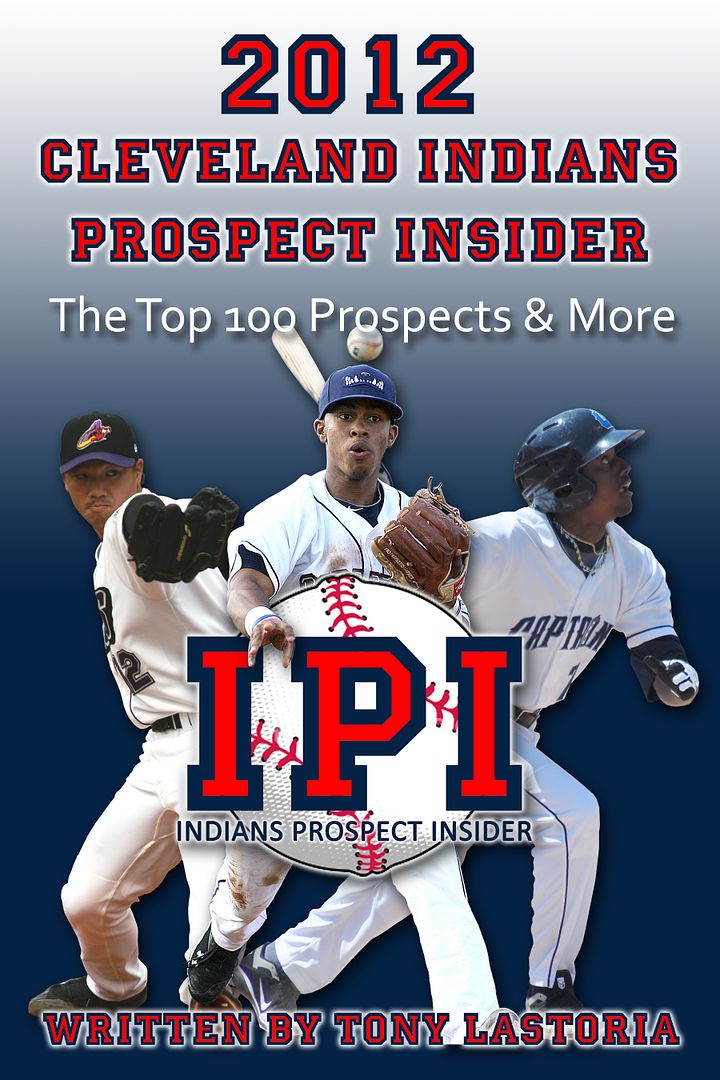
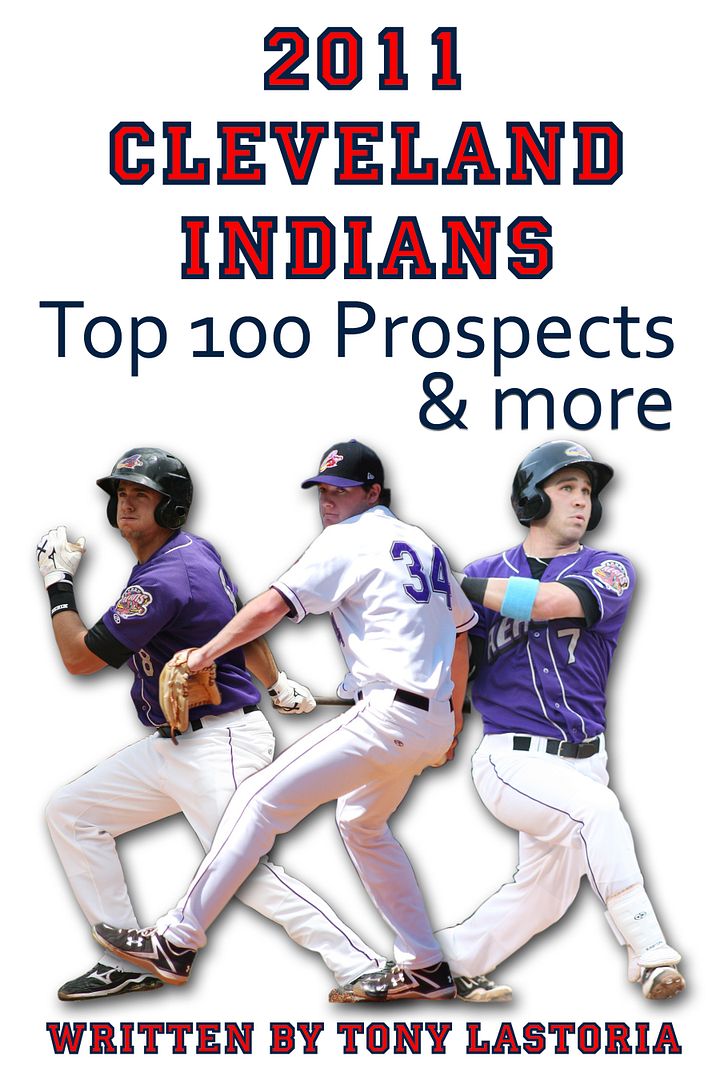
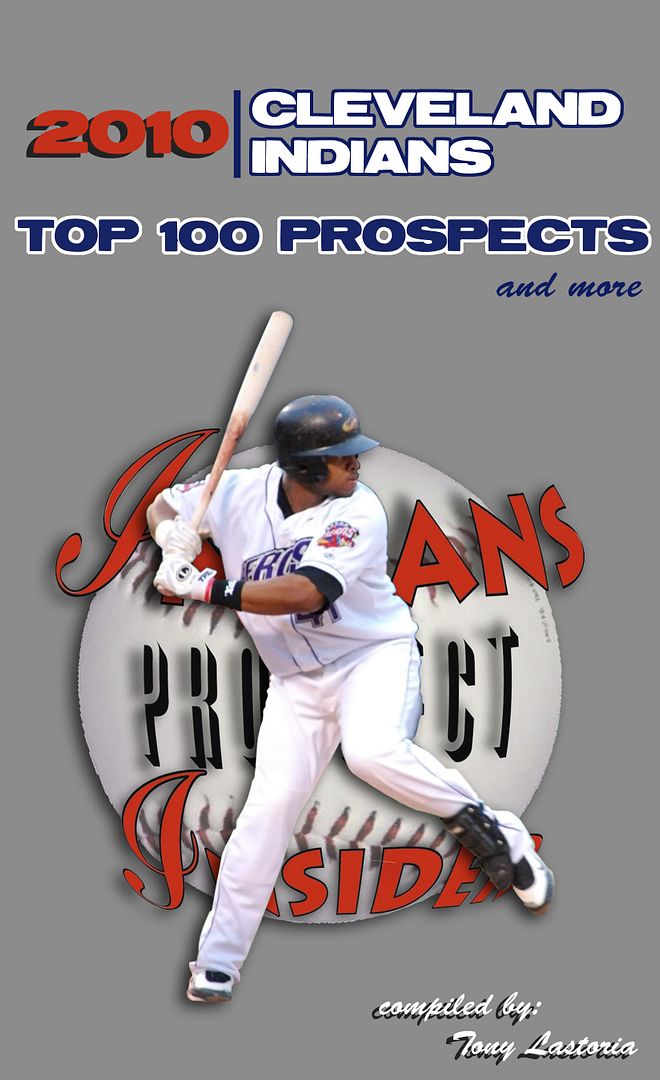
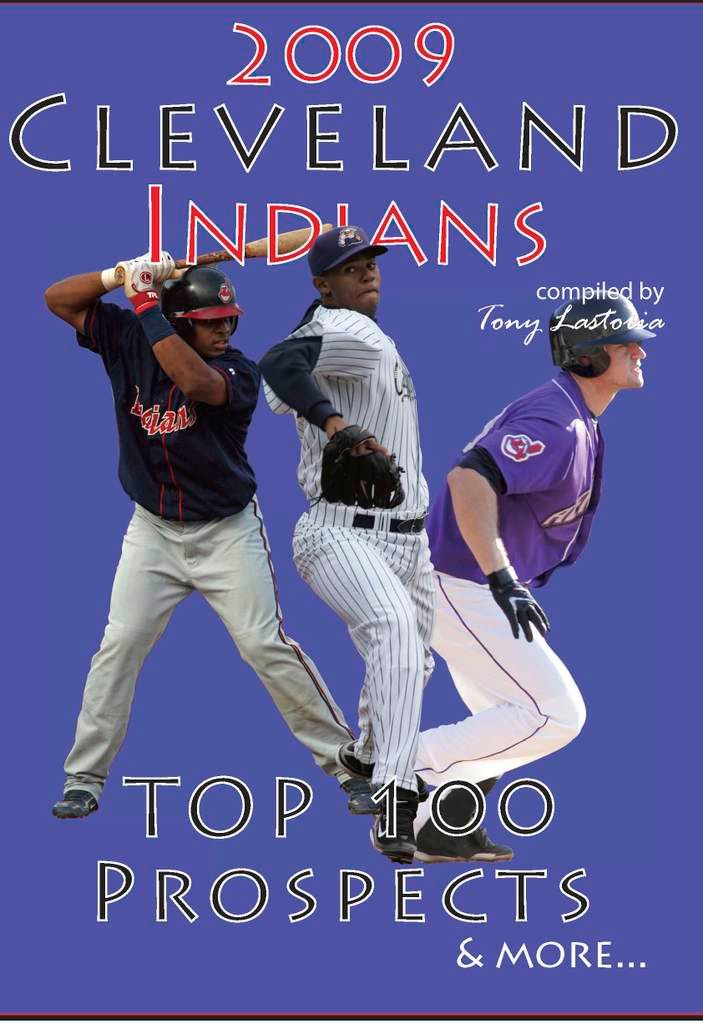
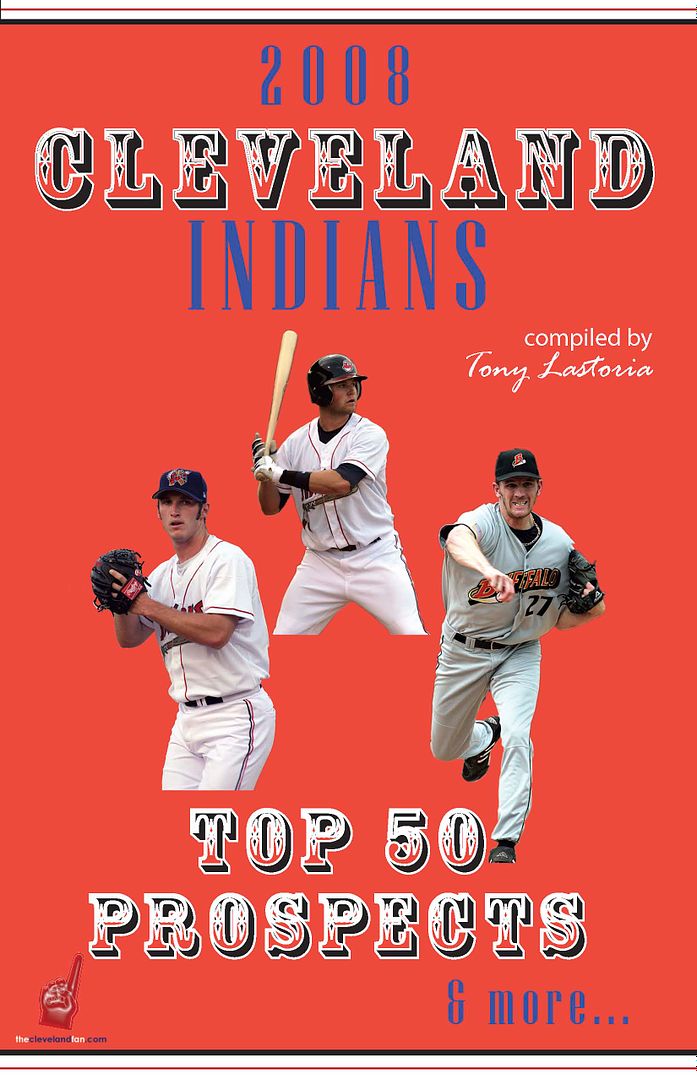
 Everything on this site is free, but for those interested in making any monetary contributions to help support the stability and growth of this site please click on the "Donate" button below.
Everything on this site is free, but for those interested in making any monetary contributions to help support the stability and growth of this site please click on the "Donate" button below.


2 comments:
so... wave goodbye to josh rodriguez, and possibly adam miller.
its far from 100% we lose JRod, and even if Miller is taken 0 chance he is kept
Post a Comment